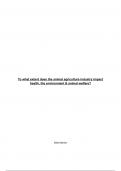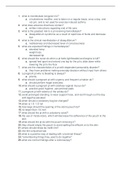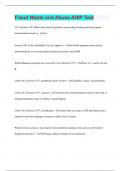Exam (elaborations)
EPQ 5000 word essay - A* 47/50 topic: plant-based diets + animal agriculture industry
- Module
- EPQ (7993)
- Institution
- AQA
· This includes a 5000-word EPQ essay complete with references and a bibliography. · I got an A*, 47/50 overall in my EPQ so this is an excellent example of what your essay should look like. · 'To what extent does the animal agriculture industry impact health, the environment & animal welfar...
[Show more]












